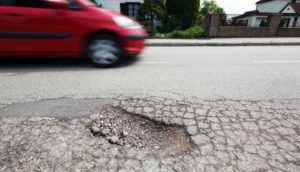Defensive Driving Practices

Defensive driving is the practice of anticipating potential hazards and using proactive techniques to prevent accidents. In general, be aware of what other drivers are doing, expect the unexpected, and be prepared to avoid it. Using defensive driving practices can help you reduce risks, protect yourself and others, and become a safer driver.
Essential Defensive Driving Practices
- Control your speed. Speeding is the most common aggressive driving behavior. In 2023, speeding killed 11,775 people (NHTSA). Drive at a safe speed that allows for quick reactions.
- Never drink and drive. Every day, 34 people in the United States die in drunk-driving crashes – that’s one person every 42 minutes. (NHTSA). Driving while impaired by any substance puts everyone in harm’s way
- Stay alert. Be on the lookout, especially for the unexpected. That means scanning everything in your line of sight, not just what’s in front of you. Be prepared to react to sudden changes from other drivers.
- Maintain a safe following distance. Tailgating can increase your chances of getting into an accident. Maintaining a safe following distance means you have a better chance of avoiding an accident in case the car in front of you brakes suddenly.
 Watch for road hazards. Debris, potholes, and other obstacles can be dangerous. Defensive driving maneuvers to avoid these hazards include safely switching lanes, using your hazard lights, or coming to a complete stop.
Watch for road hazards. Debris, potholes, and other obstacles can be dangerous. Defensive driving maneuvers to avoid these hazards include safely switching lanes, using your hazard lights, or coming to a complete stop.- Eliminate distractions. In 2023, distracted driving claimed 3,275 lives (NHTSA). Keep your attention on the road by avoiding phone use, eating, or adjusting dashboard controls while driving.
- Pass safely. Allow plenty of space when you are passing another vehicle. You don’t want to cut vehicles off or get too close. A common rule of thumb is to wait three seconds before merging back into a lane.
- Respect others’ use of the roadway. Keep your cool no matter what another driver does, and do not escalate into road rage; it only escalates dangerous situations.
- Let speeders pass. Speed limits are there to protect all road users. Slower traffic should stay to the right, and faster traffic should pass on the left unless signs say otherwise.
Defensive Driving Courses: Learn to Drive Smarter
Defensive driving courses are regulated by each state and are designed to train you based on the laws of your state. In a typical defensive driving course, students will learn accident prevention techniques, such as:
- Scanning the roadway and adapting to surroundings
- Employing a 3-second rule for following distances
- Knowing your vehicle’s stopping distance and reaction distances
- Identifying environmental hazards
- Managing vehicle emergencies
- Navigating right-of-way rules
- Safe passing techniques and clear distance requirements
- Speed adjustments and railroad crossings
WHY CHOOSE NASH & FRANCISKATO?

If you have been injured in a motor vehicle accident in which you suffered serious injuries due to another’s negligence, having an experienced attorney who is your advocate can offer you peace of mind during your recovery. At Nash & Franciskato, we have a strong track record of helping accident victims secure the compensation they need for recovery.
Call (877) 284-6600. for a free, no-obligation case review. One of our knowledgeable staff members will speak with you personally to assess your situation.
INJURED? START YOUR FREE CASE EVALUATION TODAY
Stay Informed and Protected
If you would like to receive news and blog updates regularly, sign up to receive our email newsletter. Your email address will only be used to send you our newsletter and respond to inquiries.
SIGN UP FOR NEWSLETTER
Past results afford no guarantee of future results, and each case is different and is judged on its own merits. The choice of a lawyer is an important decision and should not be based solely on advertisements.
Editor’s Note: This post was originally published February 26, 2023. It was updated on June 10, 2025.
Source of feature photo: mihtiander (Mikhail Dudarev) Image File. via depositphotos.com. Source of insert photo: ginasanders (Erwin Wodicka). Image File. via depositphotos.com
Related

 Watch for road hazards. Debris, potholes, and other obstacles can be dangerous. Defensive driving maneuvers to avoid these hazards include safely switching lanes, using your hazard lights, or coming to a complete stop.
Watch for road hazards. Debris, potholes, and other obstacles can be dangerous. Defensive driving maneuvers to avoid these hazards include safely switching lanes, using your hazard lights, or coming to a complete stop.